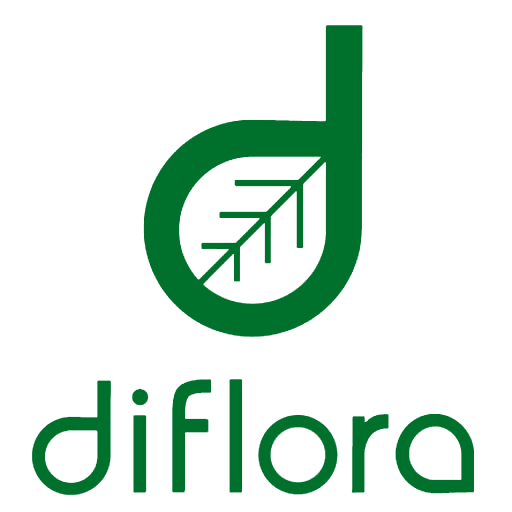Author: Florent Chouffot
Reading Time: 8 minutes
Introduction: From Plastic Pot to Terrarium Wall Transformation
In 2013, I purchased a Cephalotus ‘Hummer’s Giant’ at the French carnivorous plant nursery Nature & Paysages. After four years of growing it outside in a plastic pot with highs and lows (admittedly more of the latter), I started to think about reviving the plant by giving it more stable conditions.
In the meantime, I had a terrarium project featuring a wall of tree fern roots* covered with moss, and needless to say, carnivorous plants. It did not take long for the two ideas to get linked up in a single concept. A nice little wall covered with Cephalotus, how does that sound?
* Compact tree fern roots are also sold under the appellation “xaxim”, and may not be easy to find in your country. I got my panels from the German-run online shop Bens Jungle.

Getting started: sweat and tweezers
At first glance, it certainly looks like a borderline experiment. Most growers won’t want to delve into the unknown with a plant such as Cephalotus follicularis, which is not that easy to come by for starters, and to top it off, has notoriously unpredictable growing (and dying) habits… so better stay safe. But where’s the fun in that?
A couple of questions arise from the get-go. In the short term, can a Cephalotus survive such a disruptive handling of the roots? In the longer term, can it grow as a semi-epiphytic plant, and with no dormancy? But the most common thing I’m getting asked is how I managed to insert the roots into the panel.
Since it was too dry and stiff, I first soaked it. Then I uprooted the Cephalotus (got two from a very small clump – yay!). Now they must be matched together, which is of course the tricky part of the process.

As is, there is no space in the panel so you first need to spread the fibers apart carefully over a length suited to the length of the roots, without breaking the panel’s structure, in such a way that once the roots are inserted, they are hold into place and don’t come out. Take a deep breath, grab the extremity of a root (I used tweezers, but use what you see fit) and place it in the space you made.
It does not need to be deeply inserted, but just to hold into place. Repeat with the rest of the root, and with the other roots. Don’t panic if you damage the roots, the plant will produce new ones and recover. During the first weeks, I recommend treating the plant as if it were a cutting, i.e. with a very high level of atmospheric humidity, because the roots’ ability to uptake water will be hampered for some time.

Care, progress, and observations
Once you have installed the panel in an adequately humid environment, you can start to relax and monitor things.
Here’s a breakdown of the growing conditions that work for me.
• Light: The plants have been given artificial light since the very beginning, first from fluorescent tubes, then with LEDs, as well as some amount of sunshine in the morning between October and April. As of late 2023, they are under a bright 4000K 30W LED light, 12 hours a day. I have no idea of the lux or lumen values. If you don’t know if your lighting is strong enough, just wait for a few weeks and you’ll quickly find out whether the plants are light-starved or not. Coloration is a reliable indicator of a potential light-related issue. Ideally, the pitchers must get some amount of tan, but if the plant does produce pitchers, it’s a good sign already.
• Watering: Once a day or so, I spray demineralized water onto the top of the xaxim panel. It then seeps down through it and irrigates the rest of the setup. For a few weeks after you install the panel, you may want to water most of its surface to encourage moss growth.
• Temperatures: Usually 20-30°C during the day and 12-18°C at night. This parameter is totally dependent on the room temperature, which in turn is dependent on the season. The climate here in northeastern France is warm in summer and moderately cold in winter. The room is unheated at night to try and mimic the “highland” conditions required for the other plants inhabiting the terrarium. So there is no dormancy to speak of, but lower average temps in winter.
• Airflow: In the first years, I used a fan to prevent air stagnation, but found out that it dried out the surface of the panel too quickly. So I took it off and ended up leaving the terrarium doors ajar. The air humidity is always quite high, between 60 and 95%, which compensates for the relative dryness of the growing medium.
• Food: I use a kelp-based fertilizer called Maxsea in the 16-16-16 variant, with parsimony. Too much of it could ruin the entire terrarium. Use distilled or demineralized water, add some Maxsea until you reach 80-90 ppm, and spray the plants. Alternatively, use a dosage of 1/4 teaspoon in 4 liters of water. Fertilize once a month. Beware if you have sphagnum moss in your setup, as it can quickly get covered with algae. To better control things, my next attempt will consist of pouring
the fertilizer directly into the pitchers with a syringe, and to try a higher concentration of fertilizer.

Two years have passed, and the growth is obviously slow. The good trend however is that the plants seem to produce more pitchers than regular, noncarnivorous leaves. Sometimes, however, the pitcher development aborts at the very beginning for some reason, which reminds me of how finicky Cephalotus can be.
Divide the clumps and rule the panel

The plants produced a nice amount of roots in two years, compared to the leaf volume.
The project was to have some Cephalotus over most of the panel’s surface, but my plants did not spread much, so at some point, I had to do something more. I divided the two clumps and managed to get a dozen plants out of them, all of which survived the transplantation process. Unlike you can start with many plants, this will be an inevitable step after a few years.
Note: with the bottom of the terrarium filled with just quartz sand, extracting the roots was a breeze. So depending on your setup, your mileage may vary.

2022 Cepahlotus Terrarium Wall Progress
In 2022, the wall was starting to look like how I envisioned it five years back. Note that there are a few seed-grown Drosera tomentosa var. glabrata here and there.
I’m happy to get a continuous production of carnivorous leaves, vs. very few basic leaves. The largest pitcher I got was 5 cm across, and although I’m fairly sure that this cultivar can produce bigger traps, it’s quite good considering the suboptimal conditions it is growing in. Anyway, I don’t think ‘Hummer’s Giant’ is known for producing particularly large pitchers, unlike the name suggests. The difference lies on the central front “wing” – it is supposedly wider than on the type species.
To my surprise, some pitchers are being produced behind the panel!

December 2023. When I switched to LED earlier in the year, the new light was not as strong as the previous one, hence the weaker colors compared to 2022.
The plant with lightning-like venation is a jewel orchid, Macodes petola ‘Jungle’. More of these startling plants are coming to fill in the spaces.
What’s the takeaway after nearly seven years?
First, I cannot attest to the viability of such a growing method outside of a terrarium or greenhouse. Tree fern roots cannot hold as much water as peat or sphagnum, and if the panel is installed in a dryer atmosphere, it will desiccate fairly quickly, and the plants won’t like it unless you can compensate for the evaporation with a regular flow of water.
What I learned is that Cephalotus follicularis is not very sensitive to root disturbance and ‘Hummer’s Giant’ (I have no experience with other clones) is a robust cultivar. Dormancy is not required, even though the plants may grow more vigorously with it.
Overall, the experiment has been a success. Hopefully, it will encourage growers to let their imaginations run wild and go off the beaten track with their plants.
Author Bio
Florent Chouffot has been a carnivorous plant grower since the late 90s, now maintaining a small collection of his favorites. He also worked at the French Karnivores.com nurseries for six years. In 2024, he is one of the judges for the carnivorous plant photo contest of the International Carnivorous Plants Society.
https://www.instagram.com/florentchouffot/
Diflora Journal
A new perspective on carnivorous plants.
Beyond growing techniques, we explore art, culture, research, and ideas related to carnivorous plants.
As it was with the avant-journals of the beginning of 20 century, one of the most exciting features of our journal is the ability for community members to submit their articles.
Submit your post here!


